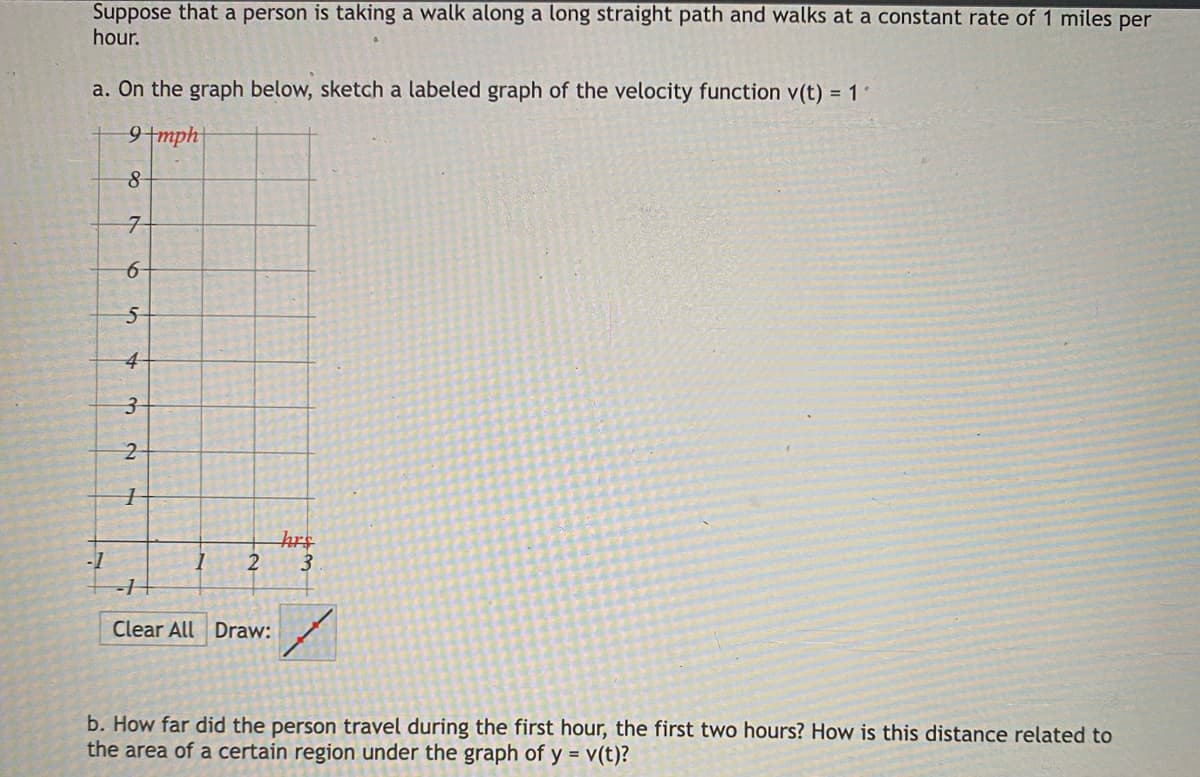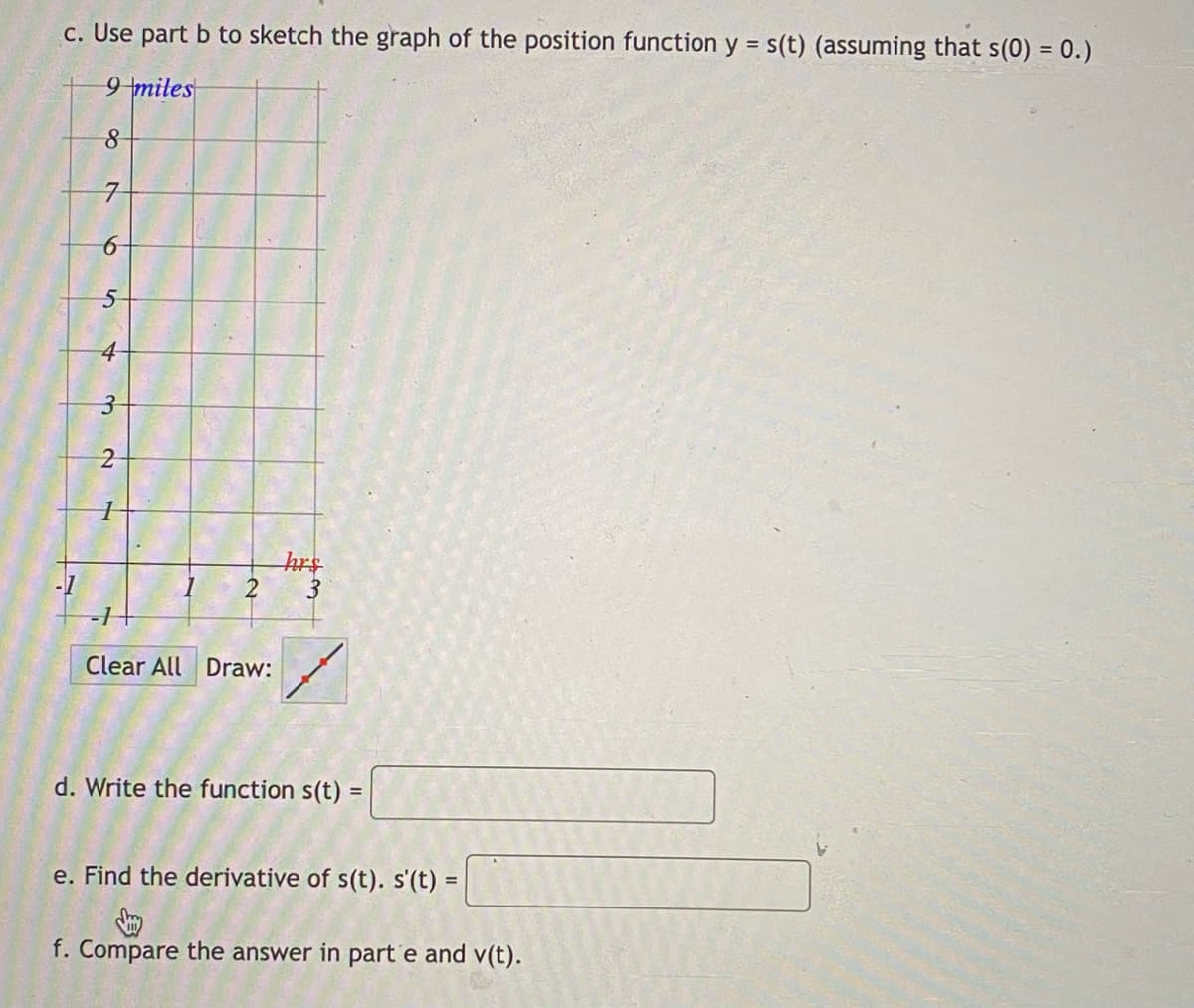Suppose that a person is taking a walk along a long straight path and walks at a constant rate of 1 miles per hour. a. On the graph below, sketch a labeled graph of the velocity function v(t) = 11 9tmph| 7- 6- 4- hrs -1 Clear All Draw: b. How far did the person travel during the first hour, the first two hours? How is this distance related to the area of a certain region under the graph of y = v(t)?
Suppose that a person is taking a walk along a long straight path and walks at a constant rate of 1 miles per hour. a. On the graph below, sketch a labeled graph of the velocity function v(t) = 11 9tmph| 7- 6- 4- hrs -1 Clear All Draw: b. How far did the person travel during the first hour, the first two hours? How is this distance related to the area of a certain region under the graph of y = v(t)?
Big Ideas Math A Bridge To Success Algebra 1: Student Edition 2015
1st Edition
ISBN:9781680331141
Author:HOUGHTON MIFFLIN HARCOURT
Publisher:HOUGHTON MIFFLIN HARCOURT
Chapter10: Radical Functions And Equations
Section: Chapter Questions
Problem 9CR
Related questions
Question
100%
It is one question. Please highlight the answer and write the answer legible please ?

Transcribed Image Text:Suppose that a person is taking a walk along a long straight path and walks at a constant rate of 1 miles per
hour.
a. On the graph below, sketch a labeled graph of the velocity function v(t) = 1 1
9+mph
hrs
2
3.
-1
Clear All Draw:
b. How far did the person travel during the first hour, the first two hours? How is this distance related to
the area of a certain region under the graph of y = v(t)?

Transcribed Image Text:c. Use part b to sketch the graph of the position function y = s(t) (assuming that s(0) = 0.)
9 miles
4
hrs
2
3
Clear All Draw:
d. Write the function s(t)
e. Find the derivative of s(t). s'(t) =
%3D
f. Compare the answer in part'e and v(t).
3.
Expert Solution
This question has been solved!
Explore an expertly crafted, step-by-step solution for a thorough understanding of key concepts.
This is a popular solution!
Trending now
This is a popular solution!
Step by step
Solved in 3 steps with 3 images

Recommended textbooks for you

Big Ideas Math A Bridge To Success Algebra 1: Stu…
Algebra
ISBN:
9781680331141
Author:
HOUGHTON MIFFLIN HARCOURT
Publisher:
Houghton Mifflin Harcourt

Functions and Change: A Modeling Approach to Coll…
Algebra
ISBN:
9781337111348
Author:
Bruce Crauder, Benny Evans, Alan Noell
Publisher:
Cengage Learning

Algebra & Trigonometry with Analytic Geometry
Algebra
ISBN:
9781133382119
Author:
Swokowski
Publisher:
Cengage

Big Ideas Math A Bridge To Success Algebra 1: Stu…
Algebra
ISBN:
9781680331141
Author:
HOUGHTON MIFFLIN HARCOURT
Publisher:
Houghton Mifflin Harcourt

Functions and Change: A Modeling Approach to Coll…
Algebra
ISBN:
9781337111348
Author:
Bruce Crauder, Benny Evans, Alan Noell
Publisher:
Cengage Learning

Algebra & Trigonometry with Analytic Geometry
Algebra
ISBN:
9781133382119
Author:
Swokowski
Publisher:
Cengage